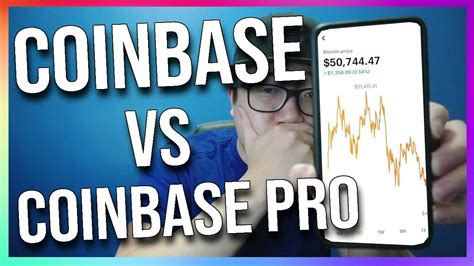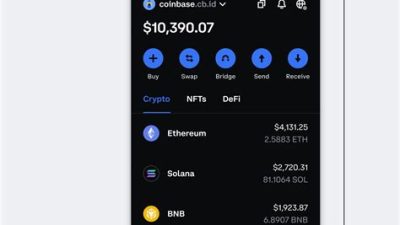
When it comes to jumping into the world of cryptocurrency, one of the first things you’ll want to consider are the fees associated with buying, selling, and trading your coins. Two popular platforms that often come up in this conversation are Crypto.com and Coinbase. Both have made waves in the crypto scene, but they offer different fee structures that can significantly impact how much you end up paying. So, let’s dive into the nitty-gritty of these platforms and see how their fees stack up against each other!
Understanding Crypto.com Fees
Crypto.com has made headlines not only for its extensive range of services but also for its competitive fees. Whether you’re using the platform for trading, staking, or purchasing crypto directly, understanding the fee structure is crucial. For trading, Crypto.com generally charges a tiered fee based on your 30-day trading volume, with fees starting at 0.40% for traders less than $25,000. As you trade more, your fees decrease. This fee structure encourages higher trade volumes, but it’s essential to keep track of your spending if you’re a casual trader. Apart from trading fees, Crypto.com also has fees for withdrawals, deposits, and currency conversions. For example, withdrawals in specific cryptocurrencies may incur a flat fee, while others could be percentage-based. Additionally, Crypto.com offers a level of transparency with its fee schedule, which is updated regularly. This transparency can help traders plan their strategies more effectively, minimizing surprises during transactions. One significant perk of using Crypto.com is its Visa card that allows users to spend their crypto anywhere. While there are fees associated with this service, users often find the rewards—like cashback in crypto—outweighing the costs. Overall, it’s essential for users to familiarize themselves with Crypto.com’s fees to ensure they’re making the most cost-effective decisions when transacting on the platform.
Breaking Down Coinbase Fees
Coinbase, one of the largest and most user-friendly exchanges in the crypto space, offers a different fee structure that users must navigate. For a simple buy or sell transaction, Coinbase typically charges a flat fee prevailing over various price ranges. This flat fee can sometimes be higher than the percentages charged by other exchanges, especially for smaller transactions. In addition to the flat fee, Coinbase also tacks on a variable fee based on the market fluctuations and the total transaction amount, which can lead to users paying more than they initially estimate. Moreover, there’s also a Coinbase Pro platform that is separate but offers lower fees, particularly advantageous for frequent traders. These fees are calculated on a maker-taker model, where the fees drop significantly with higher trading volumes. Therefore, for those who plan on trading actively, transitioning to Coinbase Pro can be a cost-efficient move. Additionally, it’s essential to note that Coinbase seeks to make a profit off transaction spreads too, meaning the price you see and the price you get can differ. For those who are new to crypto, it’s advisable to familiarize yourself with how Coinbase calculates fees, as it can impact your overall investment strategy significantly. Plus, there are also fees associated with withdrawal and conversion that should be considered if you plan to move your assets frequently. Understanding these intricacies helps Coinbase users make informed decisions about when and how to trade effectively.
Comparing Exchange Features
When it comes to choosing between Crypto.com and Coinbase, the features offered can be a game changer. Crypto.com boasts an all-in-one app that provides a plethora of services from trading to staking and lending, enabling users to manage all their crypto needs in one place. Additionally, it offers competitive interest rates on crypto deposits that can yield promising returns, making it appealing for users who wish to grow their holdings passively. Another captivating feature is the ability to spend crypto through the Crypto.com Visa card, giving users real-world utility for their digital assets. On the other hand, Coinbase is primarily focused on making buying, holding, and trading crypto as easy as possible. Its beginner-friendly interface and educational resources make it a go-to platform for newcomers to the cryptocurrency world. Coinbase also launched its own wallet, which includes advanced features, and its Coinbase Earn program rewards users for learning about various cryptocurrencies. While both platforms have their unique offerings, the choice boils down to what you value more: the comprehensive toolset of Crypto.com or the user-friendly nature of Coinbase. For users interested in trading and investment versatility, Crypto.com might provide greater satisfaction, while those looking for streamlined transactions and educational resources may prefer Coinbase. Ultimately, analyzing the unique features of each platform in conjunction with their fee structures can significantly guide users in making the best platform choice for their needs.
User Experience and Security
User experience and security are paramount when selecting a cryptocurrency exchange, and both Crypto.com and Coinbase have implemented measures to ensure their users feel protected and comfortable navigating their platforms. Crypto.com’s interface is designed to facilitate ease of use, boasting a modern look with clear functionality and responsive customer service. The app and website both prioritize user experience, ensuring that even the most novice traders can navigate them without feeling overwhelmed. Security is a top priority, too—Crypto.com employs industry-standard security practices, including two-factor authentication, withdrawal whitelist, and insurance for cryptocurrencies held in the app. This commitment to security can reassure users who may have concerns about leaving their assets on an exchange. Coinbase, widely recognized for its robust security measures, hosts a similar commitment to user safety through advanced security features such as biometric logins and 98% of customer funds stored offline. Moreover, it is licensed and regulated in various jurisdictions, adding an extra layer of trust for users. The platform’s easy recovery process for lost accounts further enhances its overall user experience. With an efficient user interface paired with stringent security measures, both exchanges excel in creating a safe trading environment. However, users must assess their comfort level with each platform’s security practices and user help resources, ultimately balancing ease of use with peace of mind when choosing their preferred exchange.
Final Thoughts: Which Platform is Right for You?
Deciding between Crypto.com and Coinbase can feel daunting, but understanding the differences is the key to making the best choice for your needs. Users looking for a full-service platform with a variety of financial products might lean toward Crypto.com. Its extensive feature set, including investment options like staking and high-interest savings accounts, appeals to those wanting to maximize their financial potential in the crypto space. Conversely, Coinbase serves as an excellent launchpad for beginners, providing educational tools and easy access to buying and selling cryptocurrencies. If you’re just starting, the user-friendly interface of Coinbase will likely make your entry into cryptocurrency smoother. However, for those looking at trading costs, weigh the fees associated with each platform against how often you plan to trade. Advanced traders might find their footing on Crypto.com, especially if they can benefit from the reduced fees due to higher trading volumes. In conclusion, both platforms have their strengths and weaknesses, and the right choice boils down to your unique investment goals, trading frequency, and risk tolerance. Educating yourself about both platforms allows you to make an informed decision that aligns with your individual financial strategy.
Comparing Crypto.com Fees with Coinbase: A Deep Dive
Understanding Transaction Fees
When it comes to trading cryptocurrencies, understanding transaction fees is crucial for investors. Both Crypto.com and Coinbase charge users for transactions, but how those fees are structured can differ significantly. Crypto.com typically employs a maker-taker model with varying fees based on the user’s 30-day trading volume. For users who transact less, fees can be higher, but with increased trading activity, the fees decrease dramatically. On the other hand, Coinbase uses a flat-rate fee system for smaller transactions, along with a percentage-based fee for larger ones. This means that for smaller amounts, users might find Coinbase’s fees to be higher, whereas higher volume traders may benefit from Crypto.com’s scalable fee structure.
Here’s a brief comparison of transaction fees for both platforms:
| Transaction Amount | Crypto.com Fees | Coinbase Fees |
|---|---|---|
| Under $10 | $0.10 | $0.99 |
| $10 – $50 | $0.20 | $1.49 |
| $50 – $200 | $0.40 | $1.99 |
Withdrawal Fees: What to Expect
Withdrawal fees are another critical consideration for those trading on Crypto.com or Coinbase. Crypto.com allows users to withdraw various cryptocurrencies at different fee rates, depending on the asset. For example, Bitcoin withdrawals might incur a fee that is a percentage of the total withdrawal amount, making it cost-effective for larger withdrawals. Alternatively, Coinbase charges a flat fee that can sometimes be higher than what users might pay on other platforms. This makes understanding the nuances between the two platforms important for users who frequently withdraw their earnings. By analyzing historical data, users will notice that Crypto.com often has lower withdrawal fees for significant amounts, while for smaller transactions, Coinbase offers competitive rates.
| Crypto Asset | Crypto.com Withdrawal Fee | Coinbase Withdrawal Fee |
|---|---|---|
| Bitcoin (BTC) | 0.0004 BTC | $2.00 |
| Ethereum (ETH) | 0.002 ETH | $3.00 |
| USDT | No Fee | $1.00 |
Deposit Fees: Which Platform Works Best?
When it comes to funding your account, deposit fees can impact your overall trading strategy. Crypto.com offers fee-free bank deposits, which can be an attractive proposition. However, credit or debit card deposits may incur charges, though these can be offset by the benefits of instant trading and immediate access to crypto assets. Conversely, Coinbase often charges a fee for credit and debit card deposits, making depositing funds slightly more expensive on their platform. Hence, if you’re planning on funding your account via bank transfer, Crypto.com may appeal more. However, users should also weigh the convenience and speed of options when making this decision.
| Funding Method | Crypto.com Fees | Coinbase Fees |
|---|---|---|
| Bank Transfer | Free | $0.00 – $25.00 depending on the amount |
| Debit/Credit Card | 2.99% | 3.99% |
Trading Fees: Making Sense of It All
Trading fees are perhaps the most crucial point of comparison for frequent traders. Both exchange platforms utilize different models to charge their users. Crypto.com uses what’s known as a tiered fee structure based on trading volume over the past 30 days, allowing users to benefit from reduced fees as their trading volume increases. This is great for active traders looking to minimize costs. Coinbase, however, employs a single fee for trades, making it simpler to understand but potentially more expensive for high-volume traders. Users must assess their trading habits—whether they are occasional investors or daily traders—because these factors can substantially impact overall trading costs. Keeping track of your trading volume and understanding how it translates to fees on each platform will help you save and maximize your returns.
| 30-Day Trading Volume | Crypto.com Trading Fee | Coinbase Trading Fee |
|---|---|---|
| Less than $10,000 | 0.10% – 0.20% | 0.50% |
| $10,000 – $100,000 | 0.05% | 0.50% |
FAQs about Crypto.com Fees vs Coinbase
What are the primary differences between Crypto.com and Coinbase fees?
Crypto.com generally has lower fees for high-volume trading, while Coinbase features flat-rate fees that can be higher for smaller transactions.
Are there any hidden fees on either platform?
Both platforms are generally straightforward about fees, but it’s essential to carefully review deposit and withdrawal fees.
How do Crypto.com deposit fees compare to Coinbase?
Crypto.com typically offers free bank transfers, whereas Coinbase may charge fees depending on the funding method.
Can I reduce my trading fees on Crypto.com?
Yes, by increasing your 30-day trading volume, you can qualify for reduced fees on Crypto.com.
Which platform is better for beginners?
Coinbase is often deemed friendlier for beginners due to its easier interface, but if you’re aiming for lower fees, Crypto.com may be worthwhile once you get accustomed to crypto.
Do both platforms support the same cryptocurrencies?
No, they differ. Crypto.com boasts a larger selection of altcoins compared to Coinbase, which favors a more curated approach.
Is Crypto.com safe to use?
Yes, Crypto.com has a good track record and employs various security measures, but always exercise caution when trading.
What are the withdrawal fees on each platform?
Withdrawal fees vary by asset; generally, Crypto.com has lower fees compared to Coinbase for larger amounts.
Can I cancel my transaction on either platform?
Transactions cannot be canceled once processed on either platform, so it’s crucial to double-check before confirming trades.
Are there fees for staking on Crypto.com?
No, Crypto.com does not charge fees for staking, offering users the opportunity to earn without extra costs.
Will my fees vary based on where I live?
Yes, fees can vary based on your location, especially concerning deposit methods and withdrawal fees.
Is it free to receive crypto on both platforms?
Yes, there are no fees for receiving cryptocurrencies on either platform.
Which platform offers better customer support?
Customer support experiences can differ, but Coinbase often gets the nod for their more exhaustive resources and response times.
How can I minimize my fees on these platforms?
To minimize fees, consider utilizing bank transfers instead of debit or credit cards and maximize your trading volume for lower rates.
Can I use both platforms simultaneously?
Absolutely! Many traders benefit from using multiple exchanges to take advantage of different fee structures and crypto offerings.
Wrapping It Up
Thanks for hanging out with us as we explored the ins and outs of crypto.com fees versus Coinbase. We hope this gives you a clearer picture of which platform might suit your needs better. If you found this comparison helpful, be sure to check back later for more insights on the world of crypto and beyond! Until next time, happy trading!











